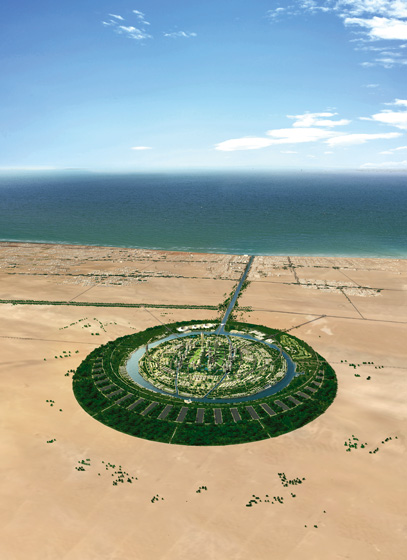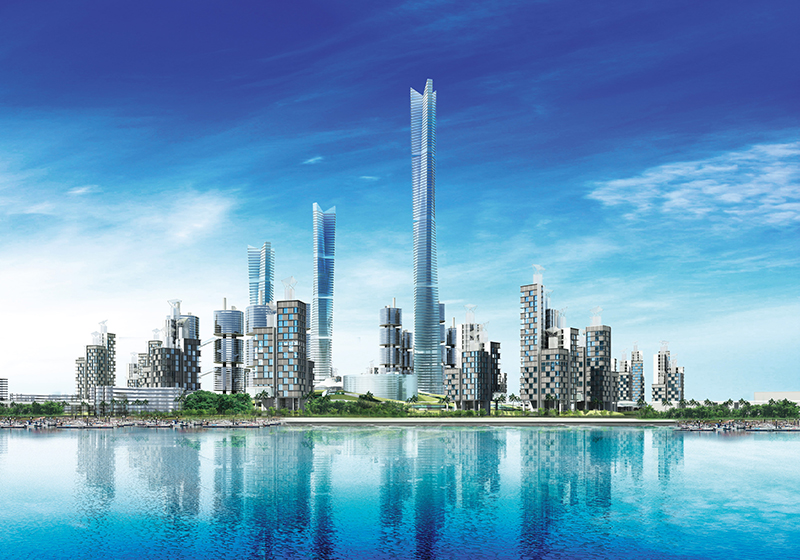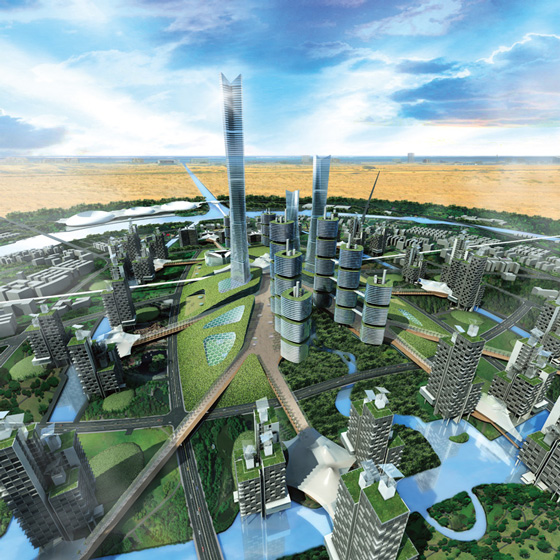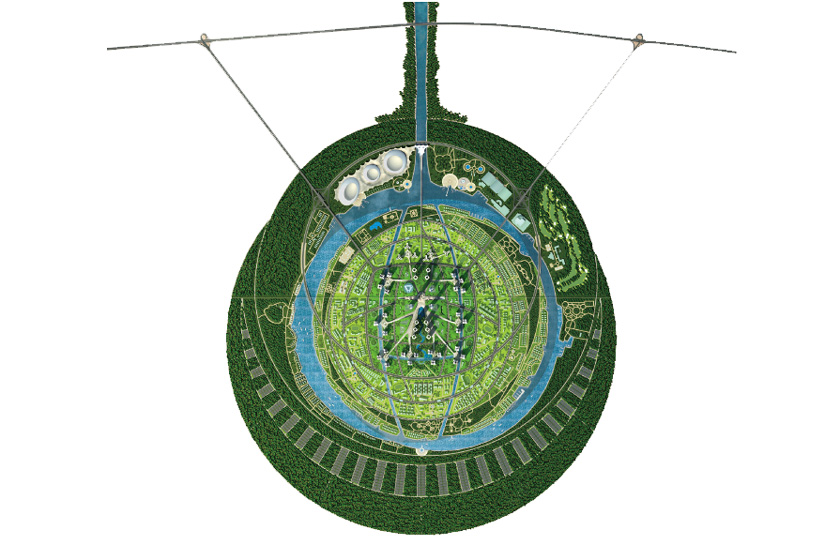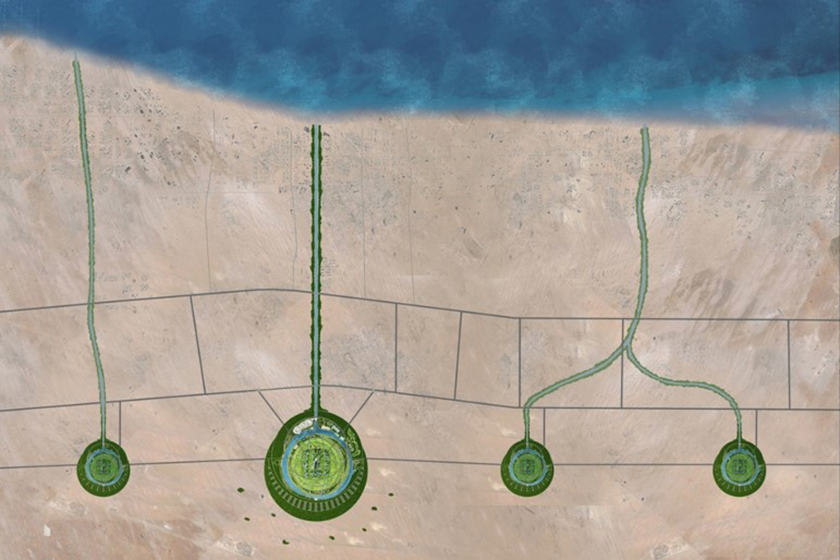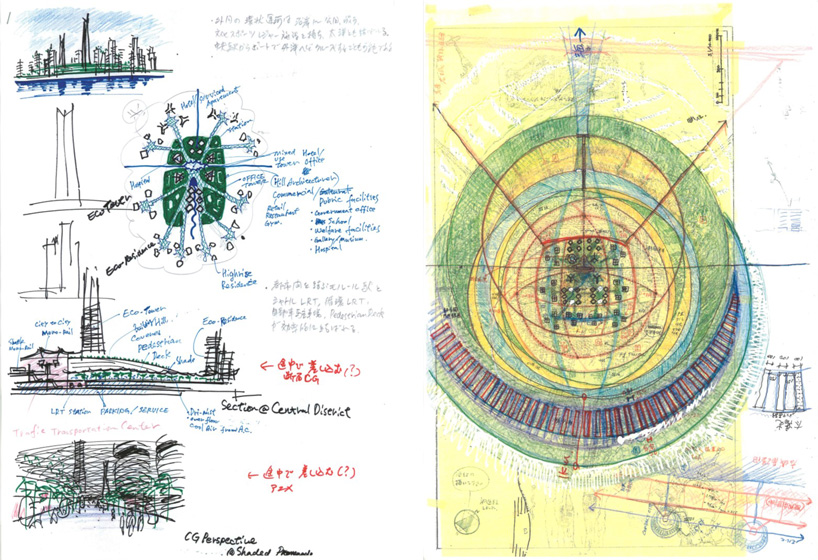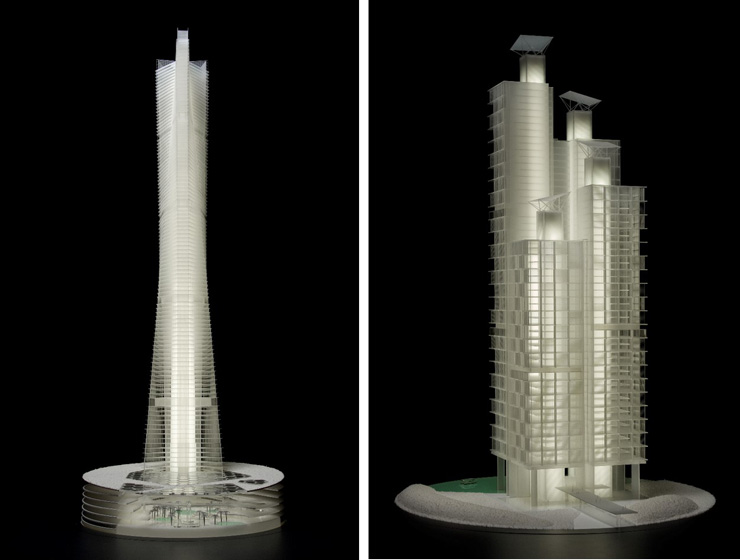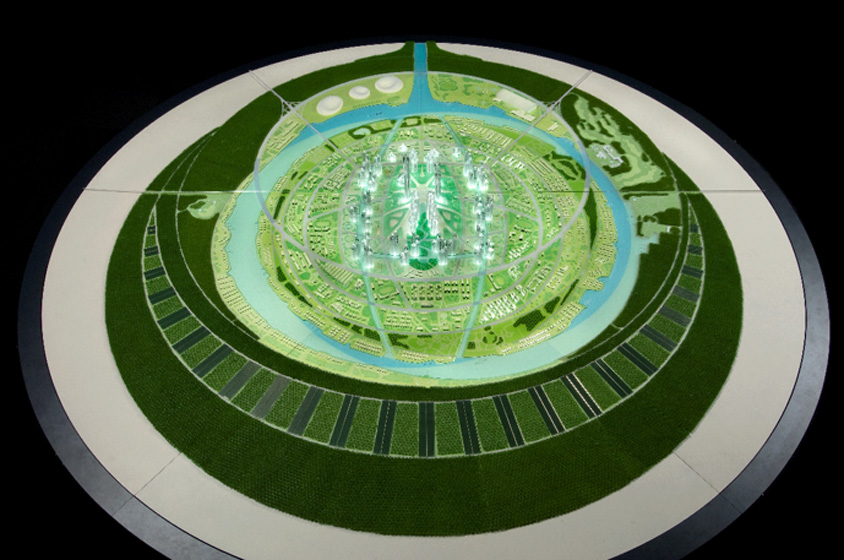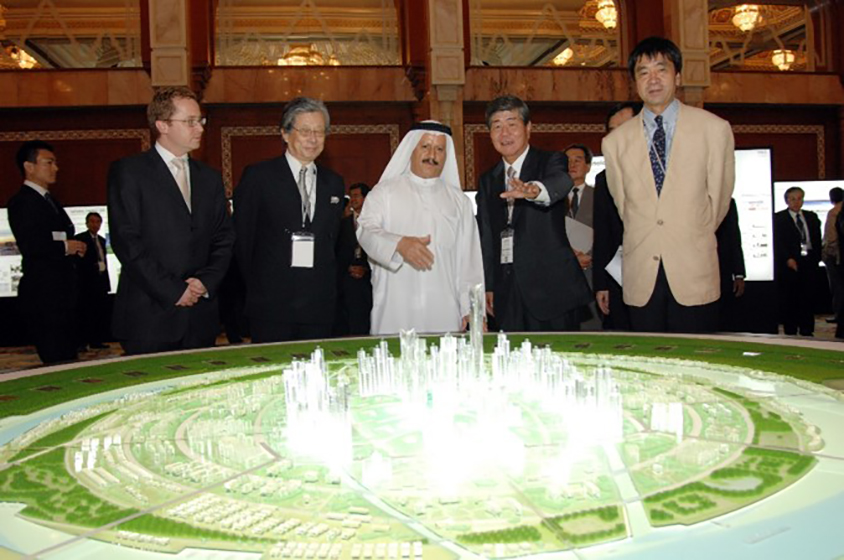Cool City and Eco-towers
Middle East
Scroll Down
Toward Sustainable Urban Development: How to achieve 60% saving and Architecture.
Research Master Plan for Eco-City and Ecological Architecture in the Middle East.
Nikken Sekkei has established The Sustainable Urban Development Consortium for Japan and Gulf States Partnership (SDCJ) with a group of leading Japanese companies in the area of environmental technology and hosted an exclusive symposium and exhibition under the theme of sustainable urban development in 2007.
On the occasion of the establishment of SDCJ, we proposed “COOL CITY” - a sustainable city which uses Japan’s state-of-the-art transportation systems, energy infrastructure, natural energy and energy saving technologies. Key architectural features include a linked network of compound types and residential types of “cool cities”; linkages between cities by mass transportation; cities on a comfortable, walkable scale; and compact cities equipped for business, living, sports, and welfare with a mass transportation station in the center. Based on our proposed plan, the city and its architecture are expected to reduce overall energy consumption by as much as 60%.
Nikken Sekkei has established The Sustainable Urban Development Consortium for Japan and Gulf States Partnership (SDCJ) with a group of leading Japanese companies in the area of environmental technology and hosted an exclusive symposium and exhibition under the theme of sustainable urban development in 2007.
On the occasion of the establishment of SDCJ, we proposed “COOL CITY” - a sustainable city which uses Japan’s state-of-the-art transportation systems, energy infrastructure, natural energy and energy saving technologies. Key architectural features include a linked network of compound types and residential types of “cool cities”; linkages between cities by mass transportation; cities on a comfortable, walkable scale; and compact cities equipped for business, living, sports, and welfare with a mass transportation station in the center. Based on our proposed plan, the city and its architecture are expected to reduce overall energy consumption by as much as 60%.
| Site Area (sq.m.) | 5,000,000 |
|---|---|
| Total Floor Area (sq.m.) | 6,000,000 |
| Building height (m) | 600 m |
| Info | Design supervision: Nikken Sekkei Joint supervision: SDCJ (The Sustainable Urban Development Consortium for Japan and Gulf States Partnership) including Daikin Industries, Figla, Hitachi, Kume Sekkei, Nikken Sekkei, Panasonic Electric Works(formerly Matsushita Electric Works), Sanyo Electric, Tokyo Gas & Tokyo Gas Engineering, Toshiba, TSUCHIYA(formerly Tsuchiya Gumi), and Azbil (formerly Yamatake) as founding members. (in alphabetical order by company name) |
